Which K40 Laser To Buy
Best 4K projector: home theater beamers worth buying
Included in this guide:
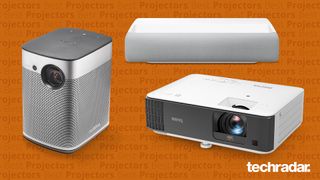
One of the best 4K projectors can give your home entertainment set-up an upgrade in an instant.
Home theater projectors are a high impact (and, sometimes, relatively low cost) workaround if you don't want a huge 75-inch 4K TV to dominate your home, but you do want a big, impressive and cinematic viewing experience when you have a movie or sport match to watch.
When you have one of the best projectors, you can expect 100-inch images to be the norm, while some models can offer projections as large as 300 inches – or as small as 40 inches, if that's all you have space for on your wall.
If you're concerned about the hassle of setting up or installing a projector – over, say, one of the best TVs – we understand why. But setting up a projector is actually easier than you'd expect and the benefits – truly massive, bright and beautiful images being the main one – make them well worth your time.
The highest-specified models in this guide are 4K projectors, though we've thrown in a handful of the best projectors that cap out at HD or Full HD resolution at somewhat lower prices to bring you more choice to those with smaller budgets. (We have a whole separate guide to the best outdoor projectors, too.)
Last but not least, if you're concerned about high prices, pay extra close attention to this page around Black Friday and Cyber Monday as we're sure to see some discounts around some of these exceptional beamers. Ready to start early? Check out this amazing Samsung The Premiere deal.
The best projectors in 2021

The next generation of living room projection
Specifications
Projection system: Three-Laser DLP
Resolution: 4K
Brightness: 2,800 lumens
Projection size: 100-130 inches
Video inputs: 3x HDMI, 1x RF, optical, 1x AUX Out
Dimensions: 550 x 141 x 367mm
Audio: 40W 4.2 channel system
Reasons to buy
+HDR10+ and 40W audio +Full TV-style smart system
Reasons to avoid
-Some rainbow effect -OS can be sluggish
After more than a decade since its last home cinema projector, Samsung has exploded back on the scene with The Premiere LSP9T projector.
This ultra short-throw beamer makes use of 4K HDR laser projection, with a three-color laser removing the need for a color filter and therefore allowing The Premiere's 2,800 lumens brightness to really shine across a max 130-inch image. Pictures are punchy and colorful, and Samsung's world-first introduction of the HDR10+ format, which adds in scene-by-scene picture calibration in compatible films and TV shows.
This projector also benefits from full implementation of Samsung's smart TV operating system, which – if a bit sluggish at times – is incredible to have on a projector over the basic and poorly-organized interfaces we're used to.
It is expensive, retailing at £6,999 / $6,490 / AU$10,999 – but is undeniably a knockout choice for those who can afford it. For everyone else, there's plenty of other great models in the guide below.
Read our full review: Samsung The Premiere projector
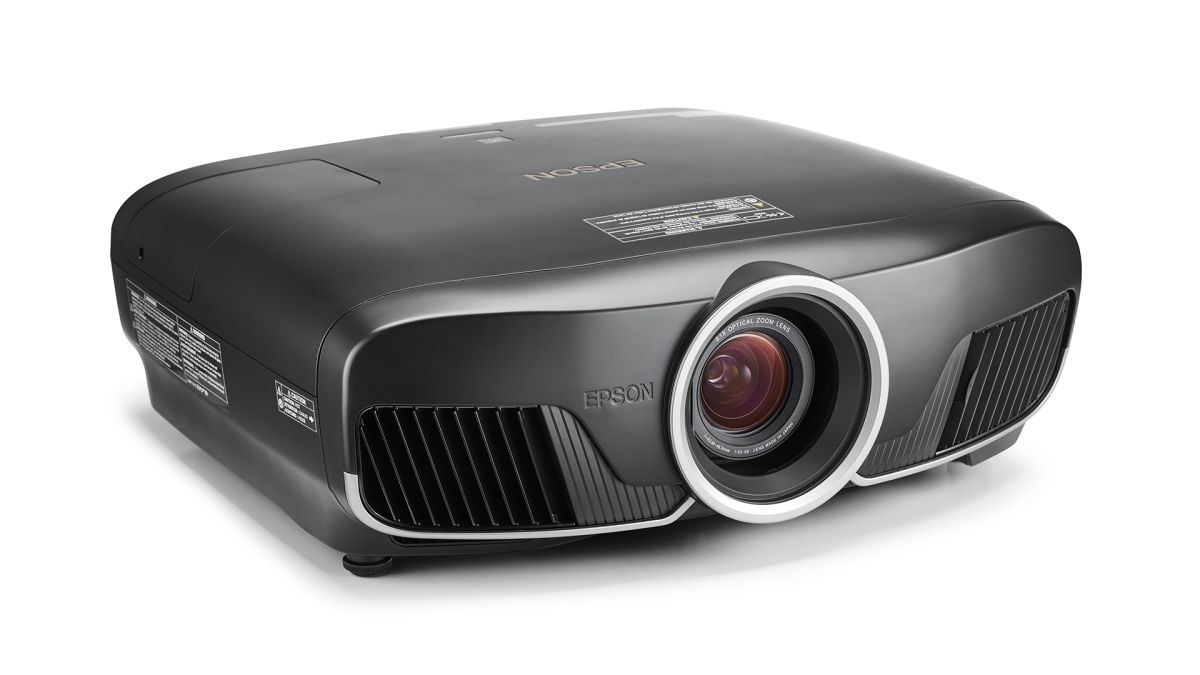
A superb long-throw home cinema projector for the price
Specifications
Projection system: Lamp
Resolution: 4K (upscaled)
Brightness: 2,600 lumens
Projection size: 50-300 inches
Video inputs: 2x HDMI, 2x USB
Dimensions: 520 x 450 x 193mm
Audio: None
Reasons to buy
+Excellent color reproduction +Motorized lens controls are handy
Reasons to avoid
-Blacks could be deeper -Motion not its strong point
We gave this beamer five stars for its impressive color reproduction, HDR support, and 2,600 lumens brightness, making for bright and impactful images. While this isn't a native 4K projector (something you just don't get at this price), even upscaled images are detailed and come across well, with highly natural skin stones and an impressive amount of shadow detail.
Blacks could be deeper, and motion could be smoother, but there's really little to complain about here. The EH-TW9400 boasts advanced capability all around, from its 3D compatibility to motorized lens controls – the latter point allowing for real precision and an easy setup. There's even a lens cover to prevent dust from creeping in!
Having launched in 2019, the Epson EH-TW9400 is widely available in the UK, India and elsewhere – though it's called the Epson Pro Cinema 6050UB in the US. Just keep in mind that it doesn't come with built-in speakers, meaning you are reliant on connected audio equipment.
Read the full review: Epson EH-TW9400
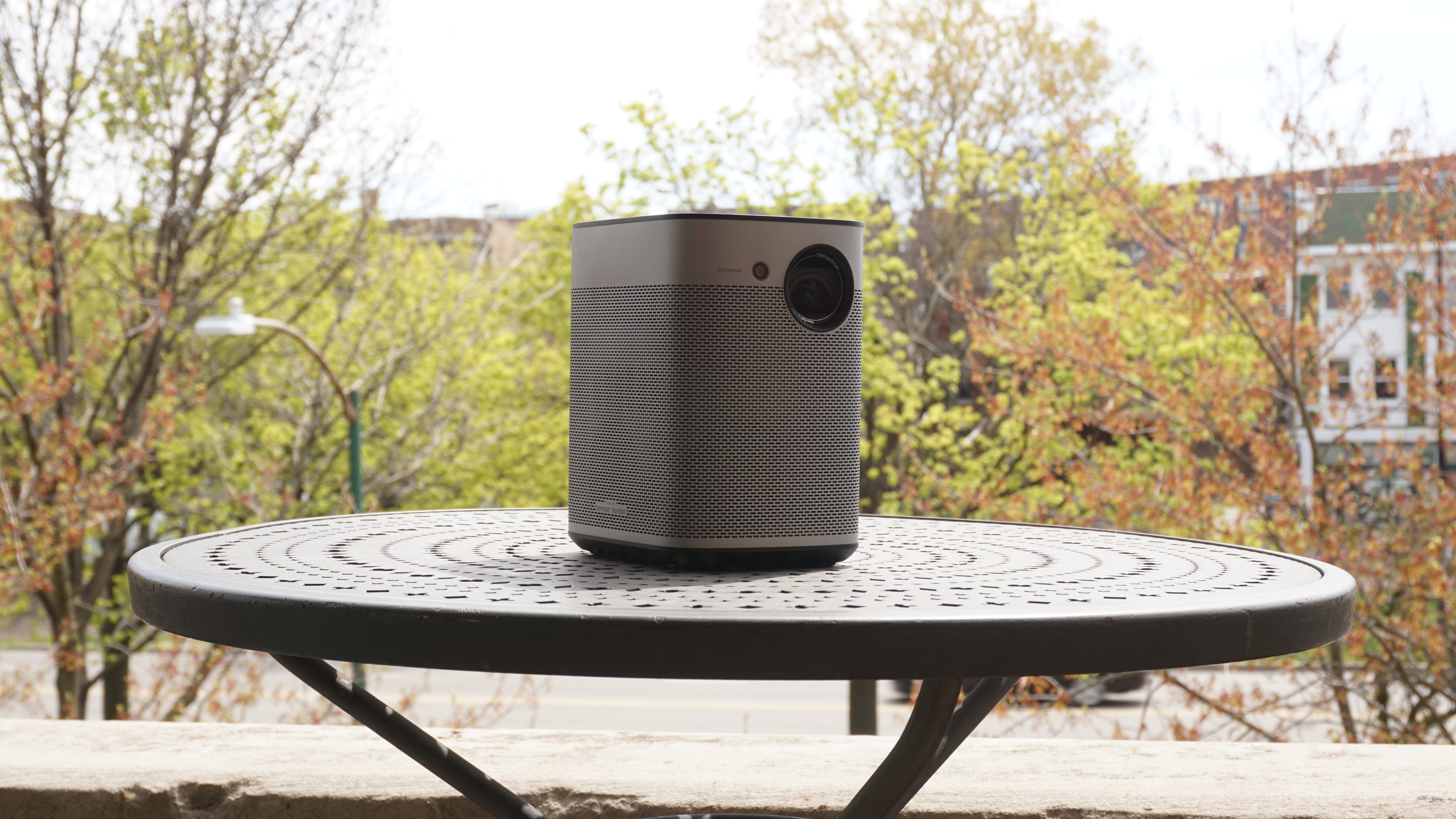
The ultimate home theater on the go – though you won't get 4K
Specifications
Projection system: Lamp
Resolution: Full HD / 1080p
Brightness: 800 lumens (plugged in), 600 lumens (on battery)
Projection size: 30-300 inches
Video inputs: 1x HDMI 2.0, 1x USB 2.0
Dimensions: 113.5 x 145 x 171.5mm
Audio: 10W (2x 5W) speakers
Reasons to buy
+Bright pictures, even on battery +Great portability
Reasons to avoid
-Video noise in dark scenes -Aggressive autofocus
The XGIMI Halo is a great shout for anyone after a portable projector that doesn't give up on quality pictures entirely. This stylish, compact, and capable projector is easy to take with you on the go, with built-in 5W speakers and 1080p / Full HD resolution to offer both sight and sound.
You're getting 800 lumens max brightness while plugged in, though this does drop to 600 lumens when running on battery – fine for dark, outdoor settings, though you'll undoubtedly fare better with the former setting. Regardless, the battery life is long enough to watch an average-length movie. There's no native Netflix support, sadly – something that also plagues the XGIMI Horizon Pro – but complaints are few and far between for the Halo.
It's worth noting that theater enthusiasts may not be satisfied with the brightness and picture of the Halo, especially because of somewhat distracting video noise in dark scenes – but for anyone who needs flexibility and wants the best projector that can fit that need, the XGIMI Halo will prove a worthy choice.
Read more: XGIMI Halo review

High framerate HDR gaming on your wall
Specifications
Projection system: DLP
Resolution: 4K
Brightness: 3,000 lumens
Projection size: Up to 120 inches
Video inputs: 2x HDMI 2.0 (with ARC), 1x Audio OUT, 1x USB, 1x RS-232
Dimensions: 312 x 110 x 246 mm
Audio: 5W
Reasons to buy
+16ms input lag is brilliant for a projector +4K at 60Hz for premium gaming
Reasons to avoid
-No Netflix, though that's common for projectors -Fiddly onboard buttons
If you're looking to lay a big load of cash on a projector, you can't go wrong with the BenQ TK700STi. If you're buying it for gaming, then that endorsement is even stronger.
This unit supports 4K at 60Hz with an unsurpassed 16ms response time at that resolution, which is as low as response times get in a native 4K projector. If you want up to 120 inches of bright, crystal-clear game on your wall or screen, this sets a new benchmark. You can also push to 120Hz if you're happy settling for HD output.
If you're never going to use it for gaming, though, and 4K isn't a big deal to you, you can probably settle for something less expensive (like the Optoma UHD38).
Read the full review: BenQ TK700STi projector
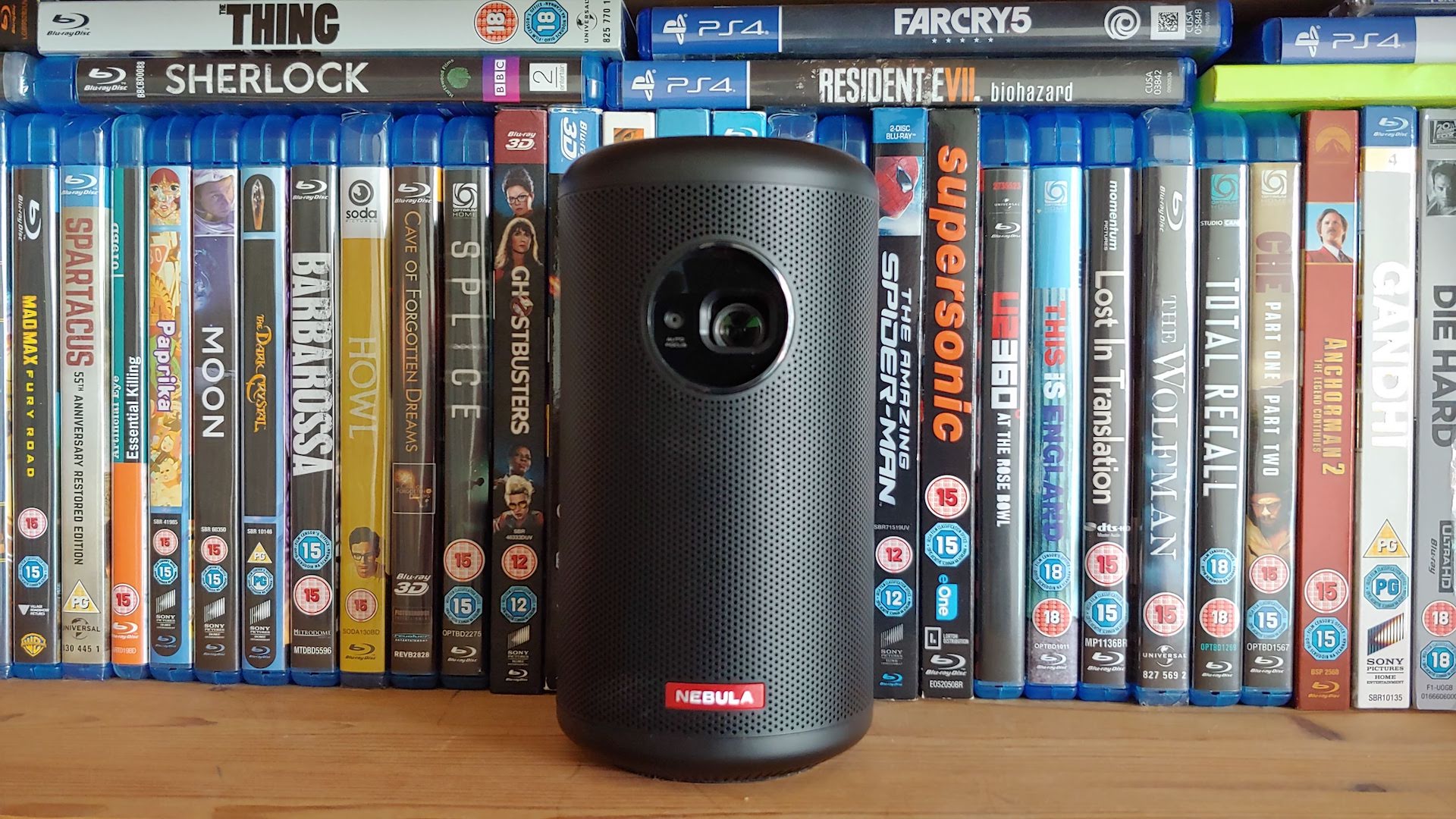
A tiny, quality home cinema projector that doesn't cost much
Specifications
Projection system: DLP
Resolution: HD (720p)
Brightness: 200 lumens
Projection size: Up to 100 inches
Video inputs: 1x HDMI, 1x USB
Dimensions: 3.15 x 3.15 x 5.9 inches
Audio: 8W
Reasons to buy
+Android TV built-in for plenty of apps +Full-size HDMI port, despite its size
Reasons to avoid
-Dim output ruins dark scenes -Netflix must be sideloaded
Some projector were meant to be portable – and few do it better than the Anker Nebula Capsule II Mini Projector.
About the size and shape of a can of Coca Cola, the tiny projector looks more like a battery pack for a piece of AV equipment than an all-out projector, but those looks are deceiving. The Capsule II is very capable for its size, offering a 720p (HD) resolution and strong audio output – and a noticeable improvement on 2018's Anker Nebula Mars II – even if it can't compete with the more premium 4K HDR models listed in this guide.
Given its size, we were pleasantly surprised to find a fully-sized HMDI port, too, rather than the mini-HDMI alternative – as well as a USB port and USB-C charging port, allowing you to power the projector while connecting to a streaming stick like the Roku Express or Amazon Fire TV Stick.
Read the full review: Anker Nebula Capsule II Mini Projector
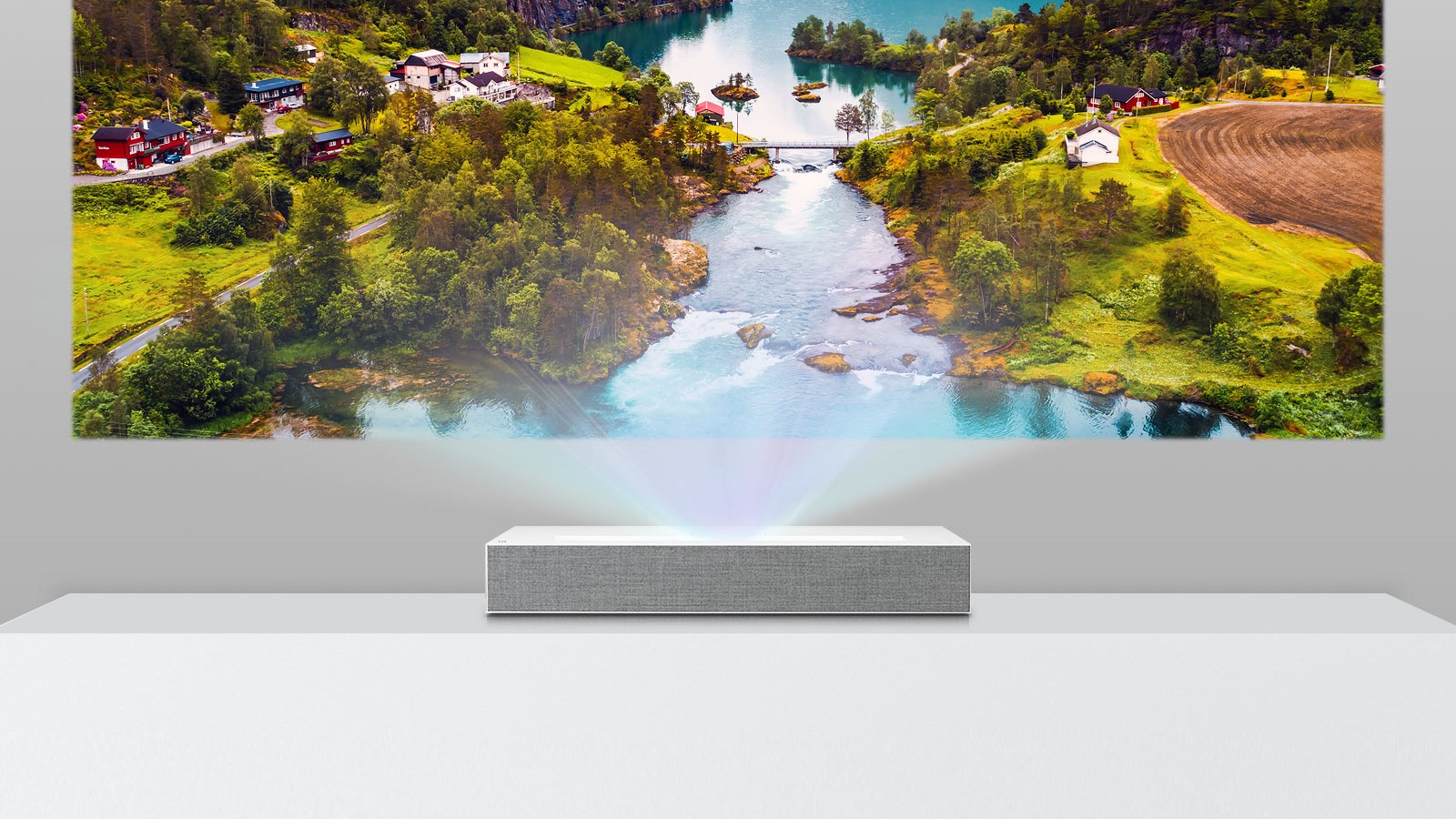
An ultra short-throw projector that knows its worth
Specifications
Projection system: Laser
Resolutions: 3840 x 2160 (4K)
Brightness: 2,700 lumens
Projection size: 90-120 inches
Video inputs: HDMI x 3
Dimensions: 6.8 x 13.7 x 5 inches
Audio: 2x 5W
Reasons to buy
+Excellent image quality +Sleek design
Reasons to avoid
-Middling speakers for the price
Really need a projector that can sit right up to the wall? This ultra short-throw CineBeam projector from LG is able to project a massive display from only inches away.
The projector itself is also brilliantly sharp in its construction, with a sleek rectangular profile that can hub your living room carpet or coffee table without obstructing any of the image it's throwing up on the wall – and you can install it from the ceiling as well if preferred.
At 2.2 inches away, the projector will deliver a 90-inch screen size, while at 7.2 inches, you'll get a 120-inch projection. The sound quality maybe isn't as impressive as the projection, though, with a lack of detail in high frequencies, and not much power on the low end either.
Read our full review: LG HU85LA CineBeam Projector
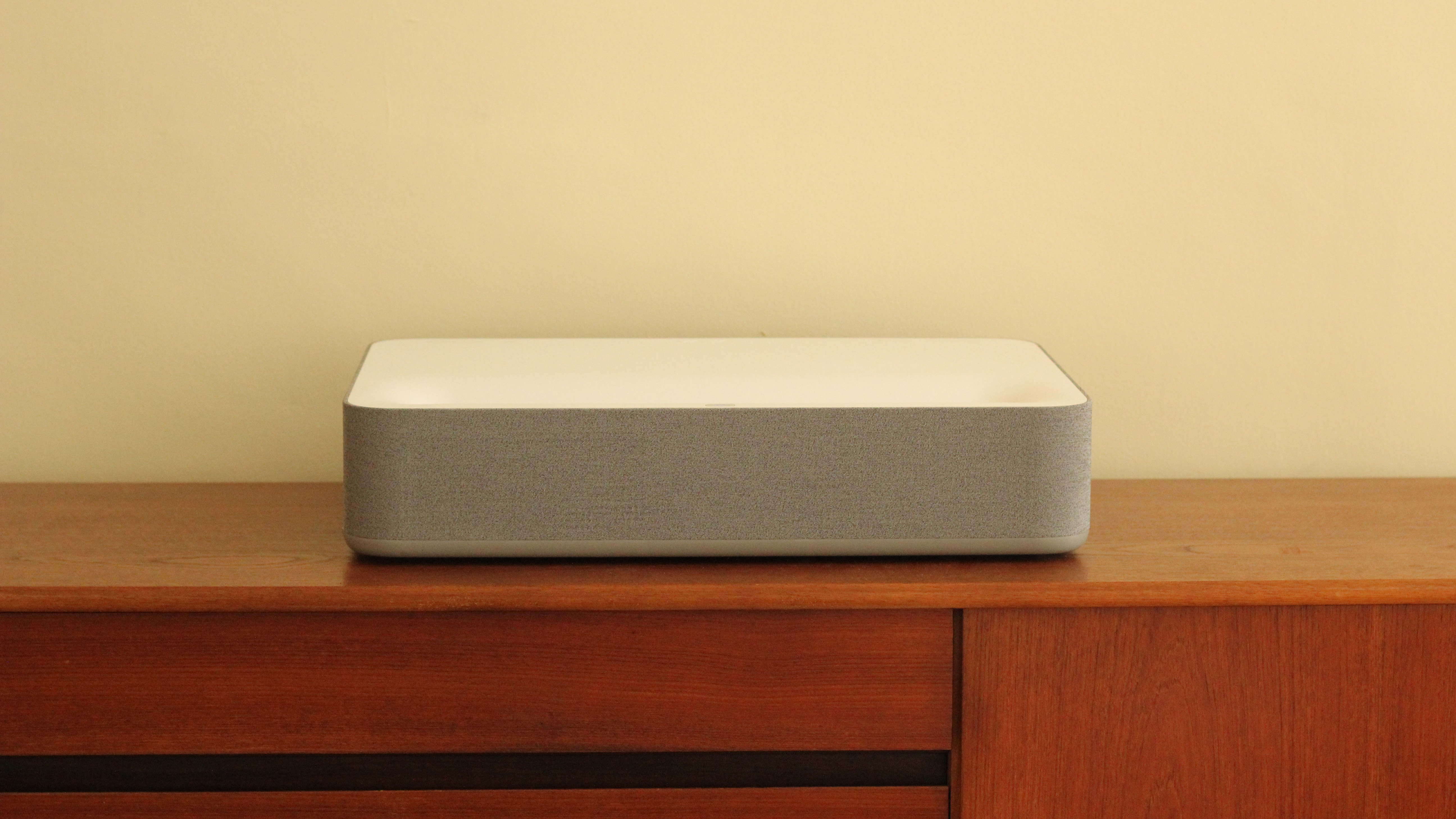
A crowdfunded 4K laser projector that won't disappoint
Specifications
Projection system: Laser
Resolution: 4K
Brightness: 2,500 lumens
Projection size: 80-150 inches
Video inputs: 3x HDMI, 1x SPDIF, 1x AUX In, 1x AUX Out, 1x USB
Dimensions: 533 x 368 x 107mm
Audio: 60W Harman Kardon speakers
Reasons to buy
+Effortless style +Max 150-inch projection
Reasons to avoid
-Poor app layout -Only 8-bit HDR
The Vava 4K projector is something of a marvel, with a sharp 4K picture and impactful HDR despite its 8-bit color limitations.
As an ultra-short throw laser projector, you're getting a massive picture (up to 150 inches) while only having to place it a few inches away from a wall or screen. The 2,500 lumens brightness is more than enough to make its images look vibrant, too – while a sleek design and soft fabric covering ensure the projector is aesthetically satisfying even when it's turned off.
The smart platform is somewhat secondary here, with an old iteration of Android TV and a couple of big-name apps (Netflix, Hulu) nowhere to be seen. But with Vava's mix of bright 4K images, impactful color, and ultra short-throw picture – all packaged in a gorgeously sleek design – it's a brilliant choice for a new home projector.
This Vava UST projector retails at $2,799 in the US, making it decently cheaper than our top pick in this guide, even if there are other, more budget models to consider too.
Read more: Vava 4K projector review
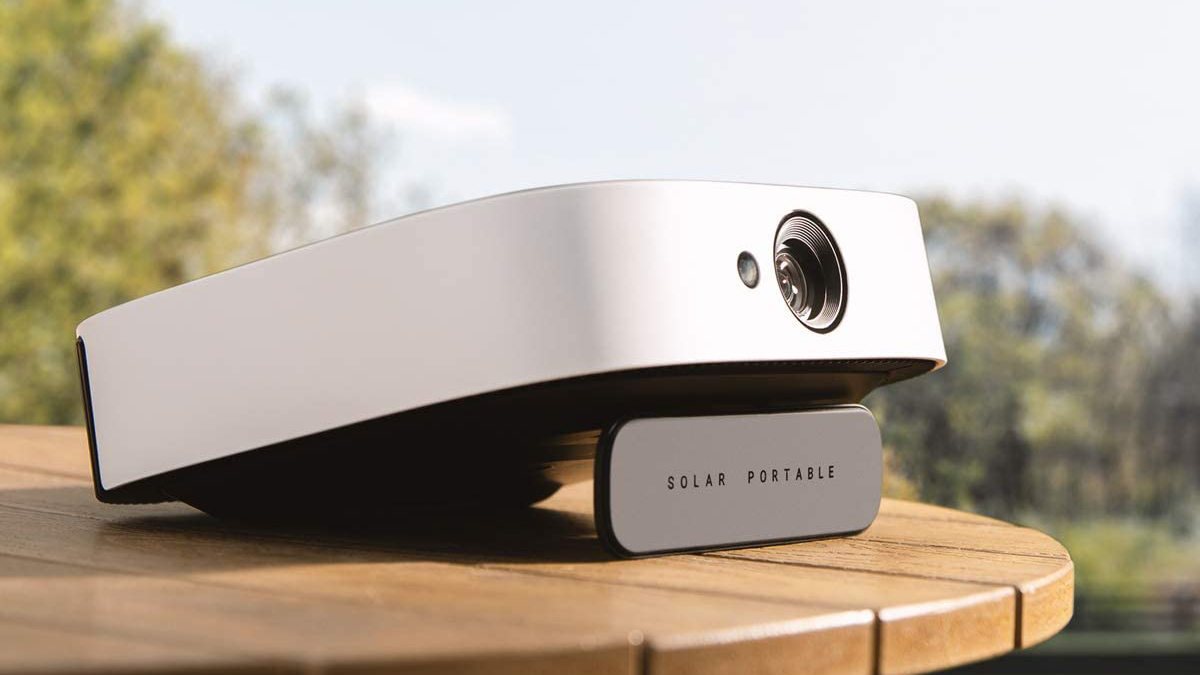
A stunning portable projector – in the right situations
Specifications
Projection system: Lamp
Resolution: Full HD (1080p)
Brightness: 400 lumens
Projection size: Up to 120 inches
Video inputs: 1x HDMI 2.0, 1x USB 2.0
Dimensions: 192 x 192.2 x 54.5 mm
Audio: 2x 3W speakers
Reasons to buy
+Stunning design +Doubles as a Bluetooth speaker
Reasons to avoid
-A bit dim -Sound could be punchier
The Anker Nebula Solar Portable is a compact and stylish mini-projector that delivers in almost every area. Sporting a sleek design, it will look great on a shelf in your living room between uses, and it's small enough to fit easily into a drawer, or even a backpack or tote bag for taking out and about.
As a portable model, the battery will last around three hours, which should be good for getting in a film when you're not close to a plug socket. However, its USB-C power port means you should also be able to link up a portable power bank for multiple uses.
While the picture quality is pretty adequate for the price and form factor, the projector is let down on the brightness front. Nevertheless, it's still a sleek, smart gadget with a few tricks up its sleeve – including Bluetooth speaker functionality that switches off the projection and just brings the tunes.
Read more: Anker Nebula Solar Portable review
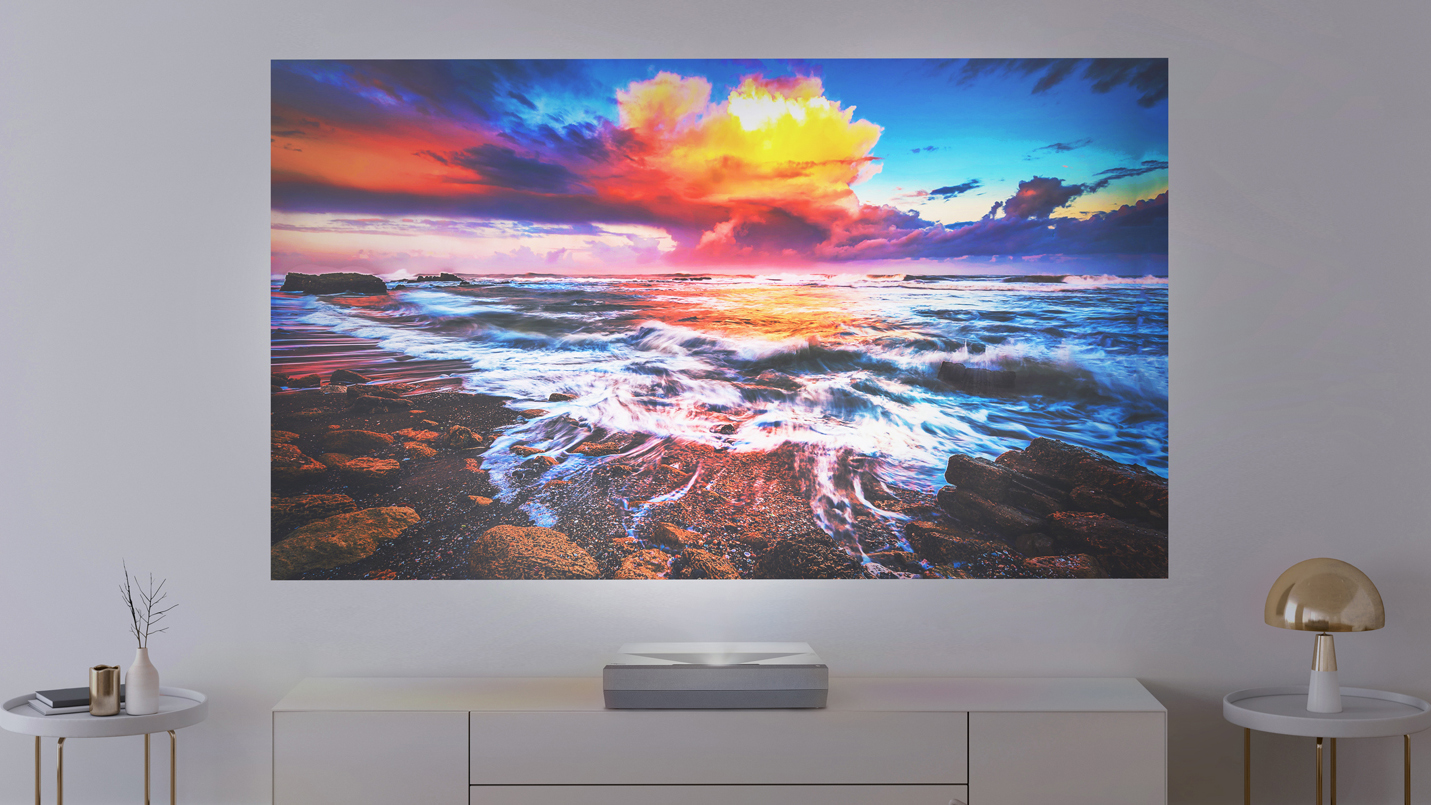
A super-bright 4K/HDR projector with great audio credentials
Specifications
Projection system: Laser
Resolutions: 3840 x 2160 (4K)
Brightness: 3,000 lumens
Projection size: 85-120 inches
Video inputs: HDMI x 3
Dimensions: 576 x 383 x 130mm
Audio: 40W
Reasons to buy
+Up to 120-inch projection +Solid sound
Reasons to avoid
-Basic, dated software -Less bright than its predecessor
The Optoma CinemaX P2 is clearly a cool looking piece of kit, and it's not often you can say that about a projector. Stylishly finished in matte white, with complementary grey fabric grille and peekaboo lens up top, it looks suitably trendy.
It's built around a single chip DLP 4K device allied to a laser light engine, which translates to pin-sharp pictures (no chance of any panel alignment issues here) and excellent color vibrancy – though it is a bit less vibrant than its predecessor
The tradeoff there is the the P2's audio performance is top notch. Each driver has its own 10W digital amp module, so that's a cumulative output of 40W. With the sonic chops of a large Bluetooth speaker, it's more than loud enough to disguise its operating noise, which is a low 26dB.
This isn't quite a cinephile grade projector, but for most of us the convenient form factor and fantastic audio performance should be ample compensation.
Read the full review: Optoma CinemaX P2
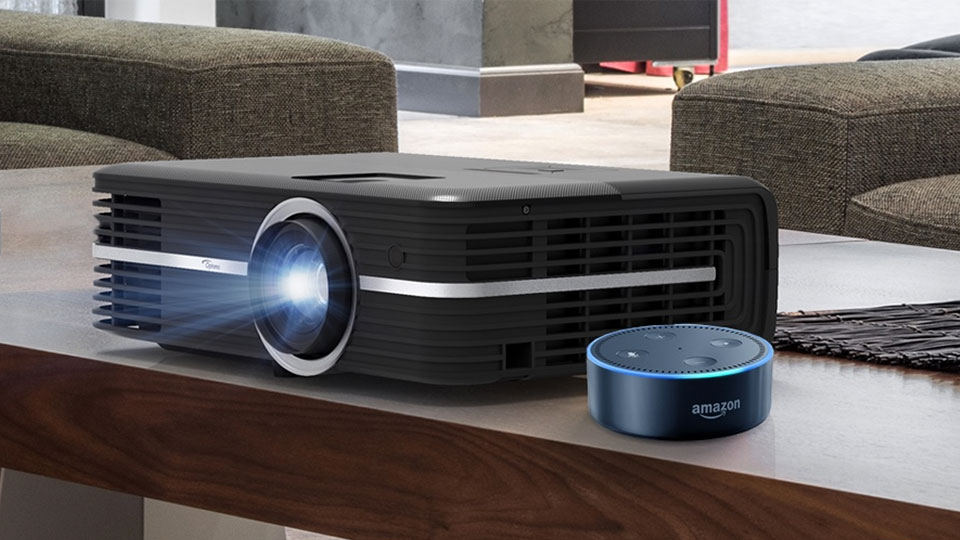
An Alexa-compatible beamer that does decent 4K
Specifications
Projection system: DLP
Resolutions: 1920x1080 (x4)
Brightness: 3,500 lumens
Projection size: Up to 100 inches
Video inputs: 2x HDMI (1x MHL)
Dimensions: 498 x 141 x 331mm
Audio: 2x 5W
Reasons to buy
+Rich, sharp image +3D support, for those who want it
Reasons to avoid
-No digital keystone -Alexa setup issues
Smart, voice activated controls for a home cinema projector may sound like the kitchen-sink approach to feature lists at first glance, jumping on the buzz-word (or should that be 'wake word'?) bandwagon of Amazon's Alexa, Apple's Siri or Google's Assistant. But think about the environment and scenario that your average projector viewing session takes place in, and it starts to make a lot of sense – you're in a dark room where seeing buttons isn't always easy, possibly with your hands loaded up with popcorn and other treats.
Being able to shout "play the movie!" at a voice activated projector, potentially installed in a bracket high above your head, seems like a sound move.
Ultimately, while the Alexa features are fun (if a little perfunctory) everything about this the Optoma UHD51A performs exceptionally. At this price you're going to be hard pressed to find a projector that can deliver this level of picture quality and this feature set more confidently.
The Optoma UHD51A represents a great shift in 4K projecting quality if you find yourself on a tighter budget. What's on offer here allows even those with smaller living spaces and more modest bank balances a taste of the home cinema high life.
Read the full review: Optoma UHD51A
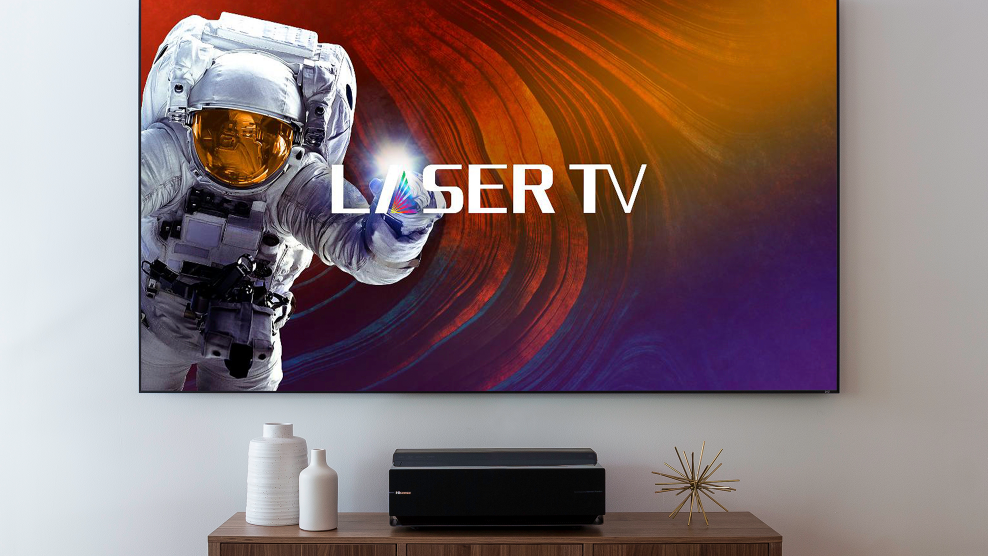
The TV-projector hybrid for those with some cash to splash
Specifications
Projection system: DLP laser
Resolutions: 4K
Brightness: 2,700 lumens
Projection size: 88, 100, or 120 inches
Video inputs: 4x HDMI 2.0, 2x USB, 1x optical, 1x audio out, 1x ethernet
Dimensions: 547 x 346 x 158 mm (projector); 2244 x 1275 x 30.5 mm (screen and mount)
Audio: 2x 15W
Reasons to buy
+Bright, colorful pictures +Great value for a 100-inch screen
Reasons to avoid
-Only average black levels -Best with professional calibration
Laser TVs are a tricky one – they technically use the same ultra short throw projection of other high-end laser projectors in this guide, though with a specifically designed ALR (Ambient Light Rejection) screen to ensure crisp and colorful images.
This hybrid of projector and TV tech can certainly be impressive, though it does remove the flexibility of many projectors – the image being locked to an 88-inch, 100-inch, or 120-inch size – and costs a far bit more than most 4K TVs. But the built-in smart TV system, strong audio output, and general novelty all help to elevate the Hisense L5F laser TV to a worthy position. If you're after something different, it may be worth checking out.
Read the full review: Hisense L5F laser TV
Best projector FAQ
Do I need a 4K projector?
If you're not convinced by any of the 4K projectors in this list, it may be worth weighing up the pros and cons of competing technologies.
A standard flatscreen television is generally a simpler affair: you put in your home, on a wall or countertop, and it stays there. It's a set screen size, and will offer the likes of 4K resolution or HDR at a cheaper price point than a projector.
Projectors can be helpful in their portability, or the flexibility of its picture, though it does mean that can be more to calibrate, especially when trying to suss out where to place in your home. It might be best placed right up against a wall, if an ultra short-throw projector, but if your wall is in any way uneven or off-white, it won't offer an ideal image – in that case, you may be better off with a dedicated screen, though that does defeat the point of ditching a television.
Projectors tend to be pricier for comparative resolutions or HDR support, especially dynamic HDR – with Samsung The Premiere being the only existing beamer with HDR10+.
However, the compact form and flexibility that a projector affords does make it a better choice in a lot of cases, and this guide contains some truly fantastic HD and 4K projectors worth your time.
How important is ultra short throw?
Many flagship 4K projectors these days come with ultra short throw technology, which vastly reduced the distance needed between the projector and the surface it's projecting onto (wall, projector screen, ceiling, you name it).
The laser projection used for this tends to lead to crisp images, though it does ramp up the price from a long-throw model, or even regular 'short throw' which sits somewhere between the two.
Ultra short throw (or 'UST') is certainly a great space-saving measure, keeping your projector in the same position as you might put a TV, and meaning you don't need to install a projector into your ceiling, while people moving around a room are less likely to block images too.
It just depends on whether you have the cash and the counter to make a UST projector a sensible investment – though it's worth noting that these models tend to pack in better built-in audio and more stylish designs to help justify those higher price tags.
- Should I buy a gaming projector?
Which K40 Laser To Buy
Source: https://www.techradar.com/best/4k-projector
Posted by: boydollourety.blogspot.com

0 Response to "Which K40 Laser To Buy"
Post a Comment